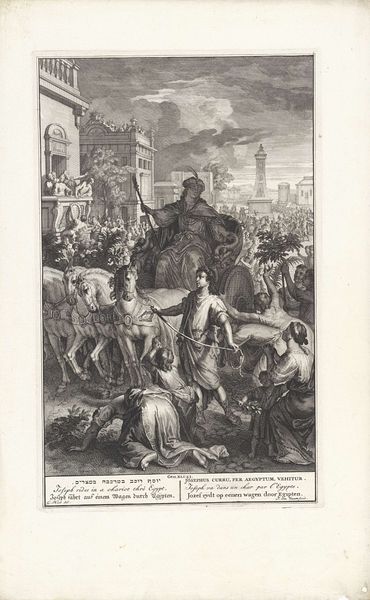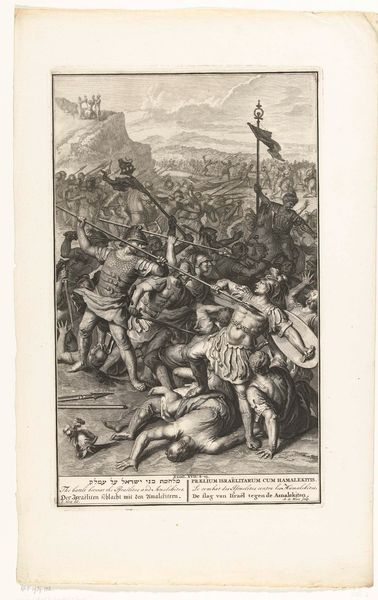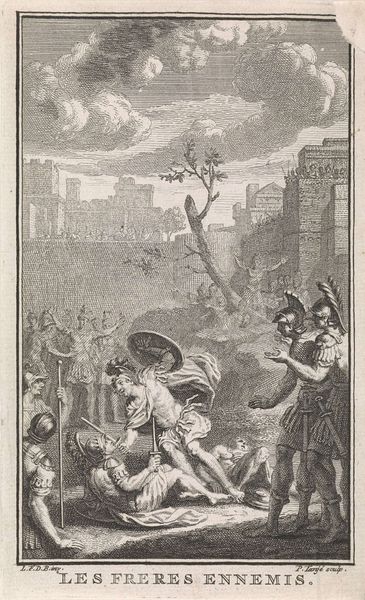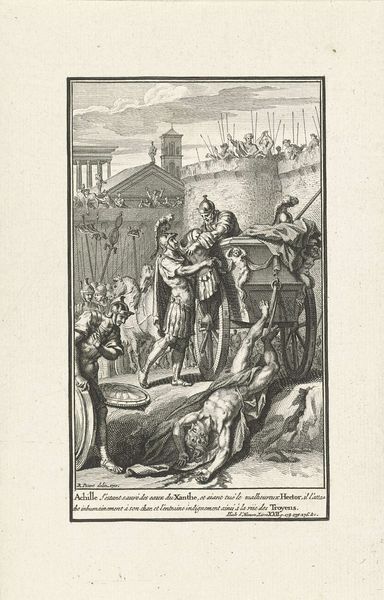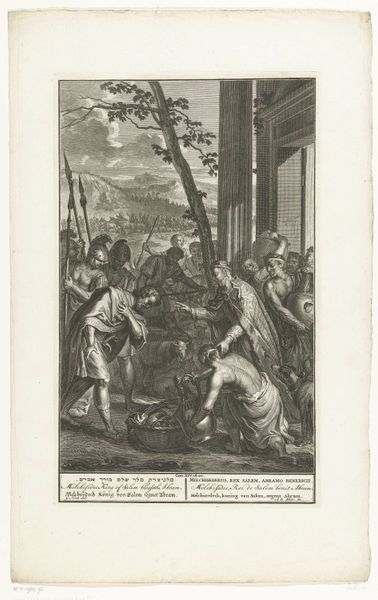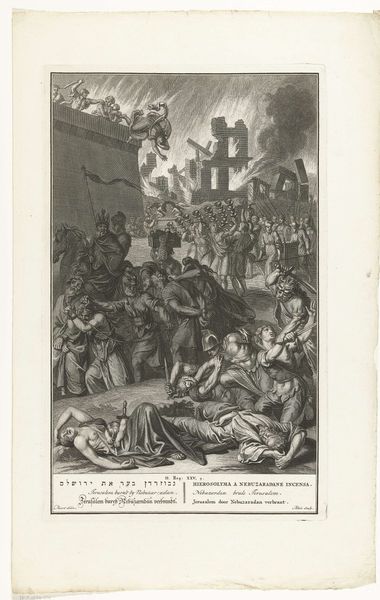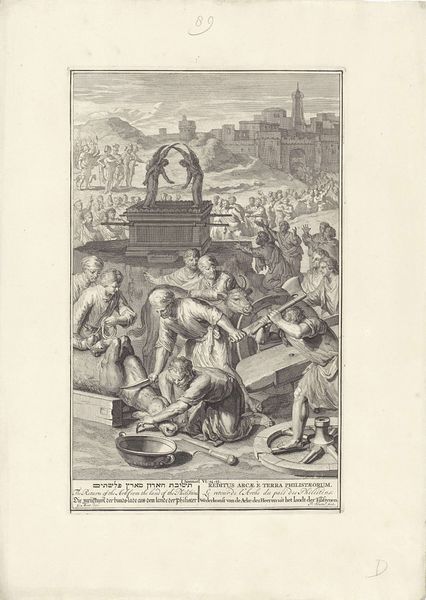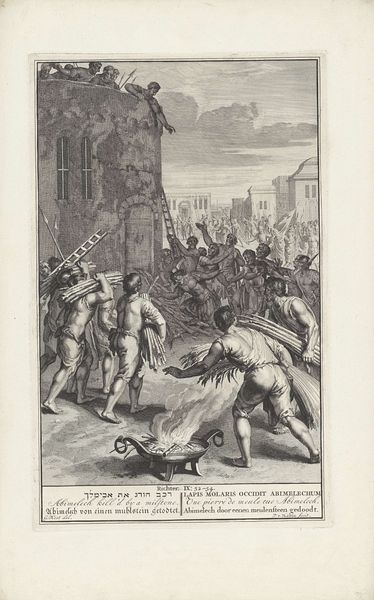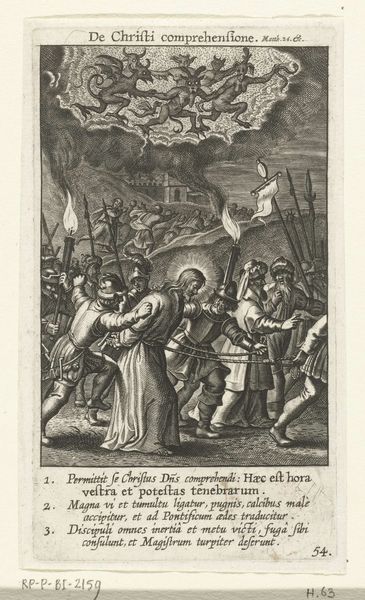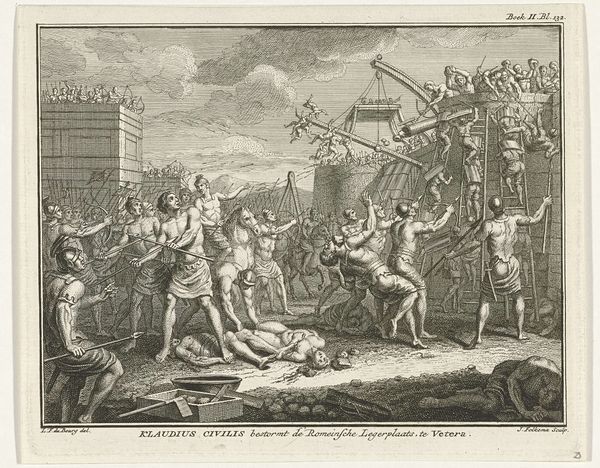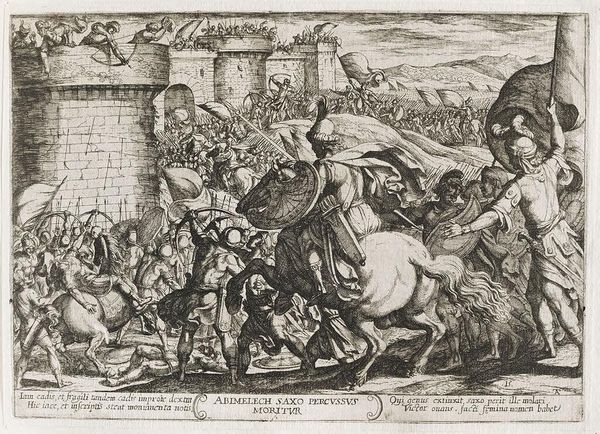
engraving
#
action-painting
#
narrative-art
#
baroque
#
old engraving style
#
figuration
#
history-painting
#
engraving
Dimensions: height 190 mm, width 123 mm
Copyright: Rijks Museum: Open Domain
Editor: Here we have Bernard Picart’s 1710 engraving, "Menelaos draagt het lichaam van Patroclus van het slagveld", or "Menelaus Carrying the Body of Patroclus from the Battlefield." The sheer density of figures makes it feel really chaotic and sorrowful. What draws your eye when you look at this piece? Art Historian: Thank you for the introduction! The swirling chaos indeed dominates the image. What immediately strikes me is the way Picart represents the male body, specifically within this narrative of war. It makes me consider constructions of masculinity and how violence intertwines with representations of honor and vulnerability. What do you notice about how the bodies are portrayed, particularly Patroclus's? Editor: He looks so limp and lifeless, contrasting with the muscular bodies of the fighting men around him. There’s a real sense of defeat. It’s so raw. Art Historian: Precisely. Considering its historical context, think about the purpose of such engravings in the 18th century. Who was the intended audience, and what messages were they meant to receive? Was it simply a retelling of Homer, or could it be seen as promoting or questioning particular social or political values surrounding warfare? How might audiences interpret the presentation of fallen soldiers within the theatre of battle? Editor: I guess it could serve to both glorify the heroic act of carrying a fallen comrade but also highlight the devastating consequences of war, questioning the idealized view of combat. Art Historian: Exactly! Now consider the fact that Picart himself converted from Catholicism to Protestantism and was known for his critical views on religious dogma. Could those rebellious energies affect the narratives and choices made for these engravings, do you think? Editor: That's a great point. Knowing that adds a whole new layer of possible interpretations about resistance and perhaps challenges to established power structures in even seemingly straightforward historical depictions like this one. I had no idea there was so much to unpack from this scene! Art Historian: These historical layers are crucial. Engaging with these elements really makes us question the dominant narratives present within historical artwork and consider intersectional readings.
Comments
No comments
Be the first to comment and join the conversation on the ultimate creative platform.


